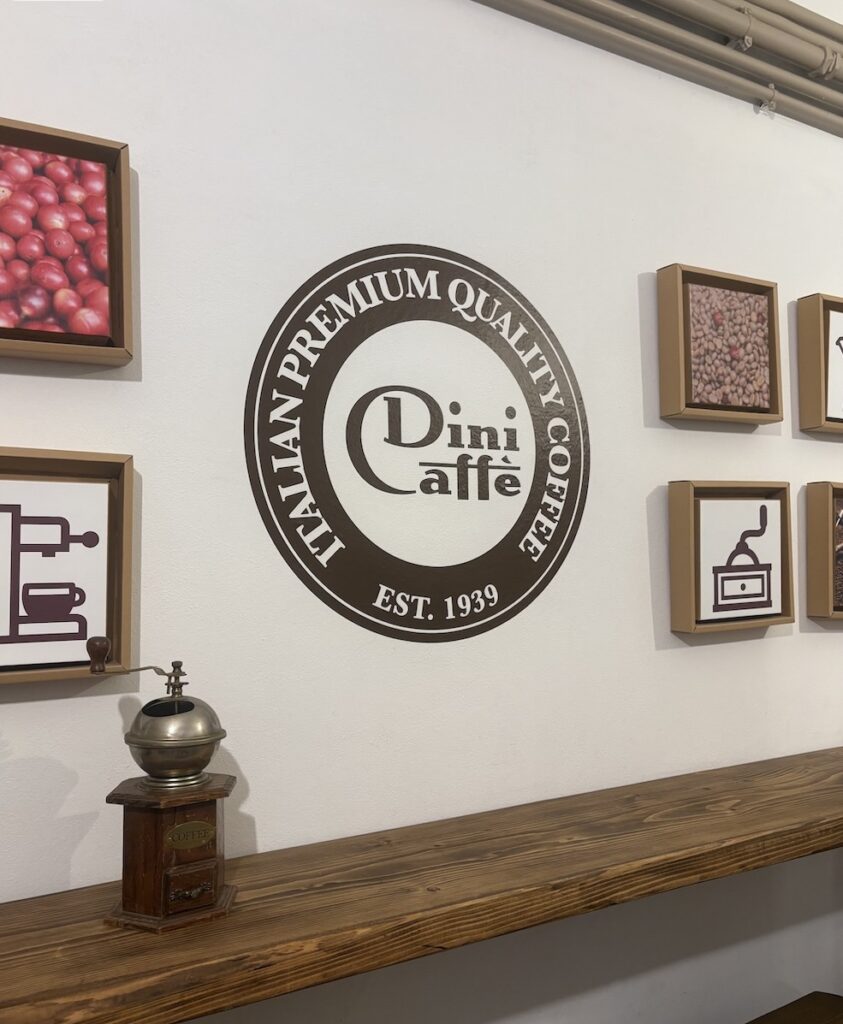Florence is a city filled with life. It is known for its art, its delicious food, its architecture, and its live music. But when you think of Italy, what is one thing that generally comes to mind?
For me, it was definitely coffee! Or more specifically, espresso.
This delicacy can be understood in many ways, but in short its meaning lies in the root of the word, “express” or fast. Today, in Dini Caffè, we learned that the art of making this delicacy is not as fast as one might think.

A Family Legacy: The Story Of Dini Caffè
Dini Caffè was founded in 1939 by Alberto Dini, a passionate coffee lover with a dream of crafting the perfect cup. What started as a small roasting operation has evolved into a family-run institution—now managed by Alberto’s granddaughters, Serena and Benedetta.

Originally located near Piazza della Signoria, the business faced a major challenge in 1966, when devastating floods destroyed the original factory. Rather than give up, the family relocated the roastery to higher ground—right beside the ancient city walls. This new location not only offers protection from natural disasters but also a unique and peaceful atmosphere for their craft.
Despite the move and the passing of generations, Dini Caffè has remained loyal to its roots. The flavor profile of their blends has remained remarkably consistent, though the coffee beans they source evolve with each harvest. This balance between tradition and innovation is what makes Dini Caffè so special.
Featuring Florence on Every Bag
One of my favorite facts from our visit is how Dini Caffè pays homage to Florence in their packaging. Each blend is labeled with a unique symbol derived from the intricate mosaics and motifs of the Florence Cathedral (Duomo).

These small visual touches serve as a beautiful reminder of how local identity and heritage permeate every part of their business—from the beans to the branding.
The Journey: Bean to Cup
- The Bean Belt
Coffee begins its journey in the “bean belt,” a region near the equator that includes countries in South and Central America, Africa, and Southeast Asia. The coffee plant produces cherries, each containing two beans. What complicates harvesting is that cherries on the same branch can ripen at different times.
Only the deep red cherries are considered ripe, which is why hand-picking is essential for high-quality coffee. It’s a time-consuming process, but it ensures consistency and flavor.
- Dry Vs Wet Processing
After picking, the cherries are processed either using the dry method (sun-dried) or the wet method, which involves removing the pulp and fermenting the beans in water tanks. Once fermented, they are washed, dried, and sorted based on color, size, and density.
- Roasting Perfection!
Once exported and received at Dini Caffè, the beans undergo roasting and blending. This is where science meets art. Dini uses what Serena proudly called the “Ferrari of Coffee Roasters”—a precision machine from Brambati Spa that monitors the roasting curve and ensures beans never overcook or scorch.
Reflection: More Than Just a Cup of Coffee
After having this excellent experience at Dini Caffè, I realized how complex and intensive the process is of making a singular cup of coffee. Although it’s the second most consumed beverage in the world (behind water), most people do not think twice about where their coffee comes from or how it is made. Dini Caffè is the perfect example of passion and precision. From the women handpicking cherries for hours on end, to the unique blends of beans that make it so special, it truly is a work of art.

Check out our instagram! Instagram and Tik Tok: Tik Tok
Find Dini Caffè Information Here
Via dei Bastioni, 38, 50125 Firenze FI
By Persephone Deeds, Cecilia Chu and Lauren More

“Sipping History: Inside Florence’s Iconic Dini Caffè”
